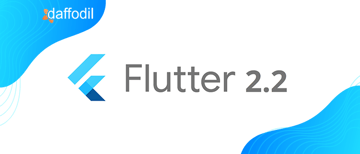
Software development is the biggest trend in the IT industry. Digital transformation, software modernization, cloud computing are some of the sought-after practices to prepare businesses for the current and post-COVID scenario.
Due to the rising demand for software applications, developers are under constant pressure to keep the time-to-market and performance factors, together. Fortunately, there are tools and frameworks to rescue.
In this article, we are going to talk about 12 such tools and frameworks that are simplifying software development. These tools are supporting developers in building uncompromised, modern solutions, and at the same time ensure that they are delivered on time. Continue reading to know more about them.
Frameworks for Frontend Development
- React
ReactJS and React Native got into fame for offering component-based web and mobile development. ReactJS was launched in 2013, and ever since it is one of the preferred choices for building component-based web applications. In expansion to its success, React Native was launched that facilitated cross-platform mobile app development using the same codebase. Such an approach proves to be effort-saving and cost-effective as well. That is why React by Facebook is ruling the software development kingdom.
ALSO READ: 7 Reasons Why ReactJS is taking over Frontend Development
- VueJS
Vue was launched into the market with version 2.6.11 in December 2019. This monolithic framework is highly recommended when there is a need to build a Single Page Application (SPA). Vue.js can size about 20 KB while retaining its speed and versatility that makes for many superior results in comparison to its peer frameworks.
- Angular
This frontend development framework by Google is meant for building web, mobile web, native mobile, and native desktop apps. Angular has got great community support and is preferred for building small to large-scale apps. Moreover, Angular offers defaults for things such as state management, language choice, network connectivity, and building toolchain.
Here is more that you would like to know about the Angular framework and the kind of apps that can be built with it.
- ASP.NET Core
ASP.NET Core is trusted for cross-platform development for Windows, Linux, and macOS It uses Universal Windows Platform (UWP) for creating Windows and web apps. C#, F#, and Visual Basic languages are used to write applications and libraries for .NET Core. It’s a preferred framework when building an application with microservices or Docker containers.
ALSO READ: .NET Core vs .NET Framework: Overview and Comparison
- Gatsby
Gatsby is a React-based open-source framework building websites and apps. The frontend development framework enables is an option for building apps of almost every scale- be it is blog, portfolio site, or a high traffic e-commerce store. That’s what makes it one of the most loved frameworks on the Stack Overflow survey results.
- Flutter
Flutter is an open-source framework for building creating apps for iOS, Android, Windows, macOS, Linux, and the web. Launched in 2018, this framework uses Dart as the Object-Oriented Language for building reusable UI components. Flutter is entrusted by big names in the market, such as Alibaba Group, EMAAR, Philips, Grab, etc., and is used to build apps in varied domains.
- TensorFlow
Tensorflow is an open-source framework that allows building and training Machine Learning (ML) models. It’s meant for creating deep learning models and can be used for simple mathematical calculations or complex multivariate analytics. Dropbox, Twitter, Uber, Intel, Google Photos, Google Search are utilizing this ML framework by Google.
Tools for Frontend Development
- Sublime Text
Sublime Text is a cross-platform source code editor with a Python application programming interface. It supports various programming and markup languages, offers a plethora of keyboard shortcuts, and allows adding functions using plugins (usually community-built). The text editor is known for unmatched responsiveness that comes from a custom cross-platform UI toolkit and syntax highlighting engine for frontend development.
- Github
Github is a versatile place for code hosting, continuous build and integration, project board and issue tracker, file hosting, and more. Founded in 2007, it has over 65 million developers who manage Git repositories, and contribute to over 200 million projects.
- Grunt
Grunt is a Javascript task runner. It enables task automation by performing some of the frequently happening tasks such as unit testing, compilation, minification, and linting. It uses a command-line interface to run custom tasks saved in a file.
- Twitter Bootstrap
Twitter Bootstrap is HTML, CSS, and JS framework for building responsive and mobile-first websites. Built on Leaner Style Sheets, this frontend toolkit has custom jQuery plugins, supports major browsers, tablets, & smartphones, has built-in grid classes, etc. Bootstrap drastically cuts down the code of lines needed for a project
- CodePen
CodePen is an online code editor where learners can create code snippets and test them. The online community allows testing and showcasing user-created HTML, CSS, and JS snippets to other developers in the community for review. This ascertains that any issue in the piece of code is tracked at the initial stage to avoid any problem in the future.
Which Frontend Development Tool/Framework is your Favorite?
Depending upon project requirements, we usually keep on changing our preferences of technology for development. While for some projects React works well and for some Angular do the needful.
At Daffodil, our criteria for selecting a tool or framework depends completely upon the project and its requirements. However, our developers do have their favorites. Which frontend development tool/framework is your favorite? Share with us in the comments below.



